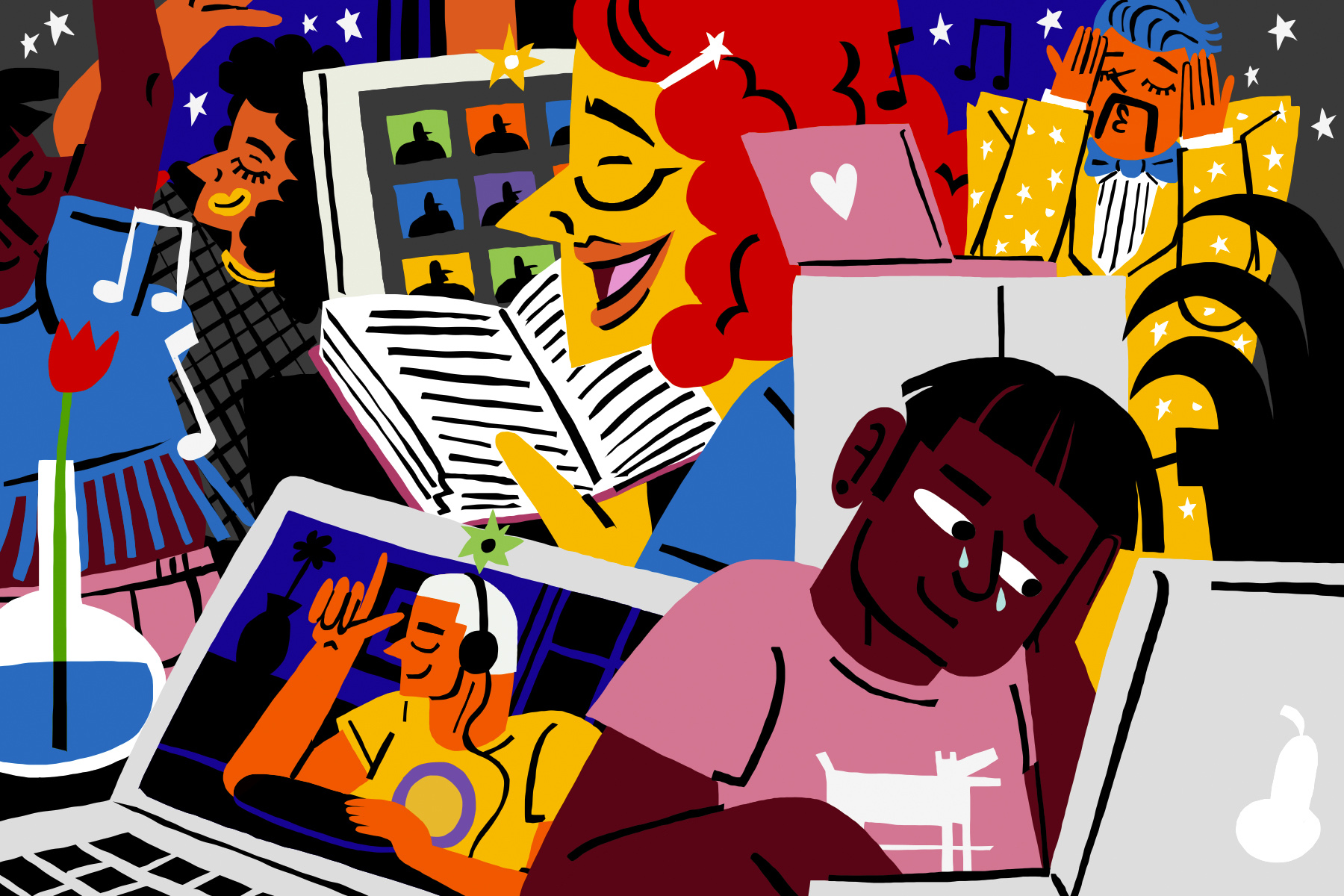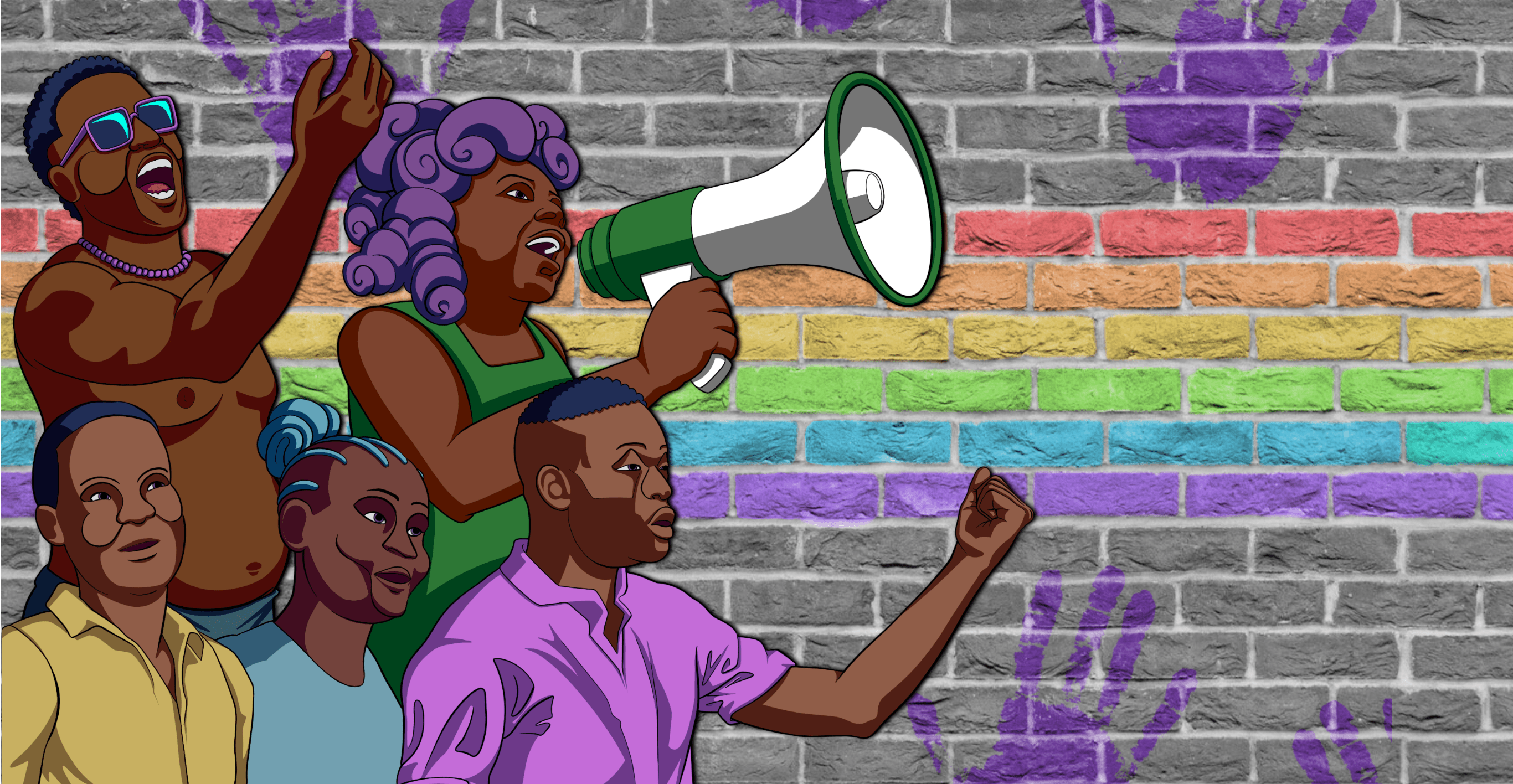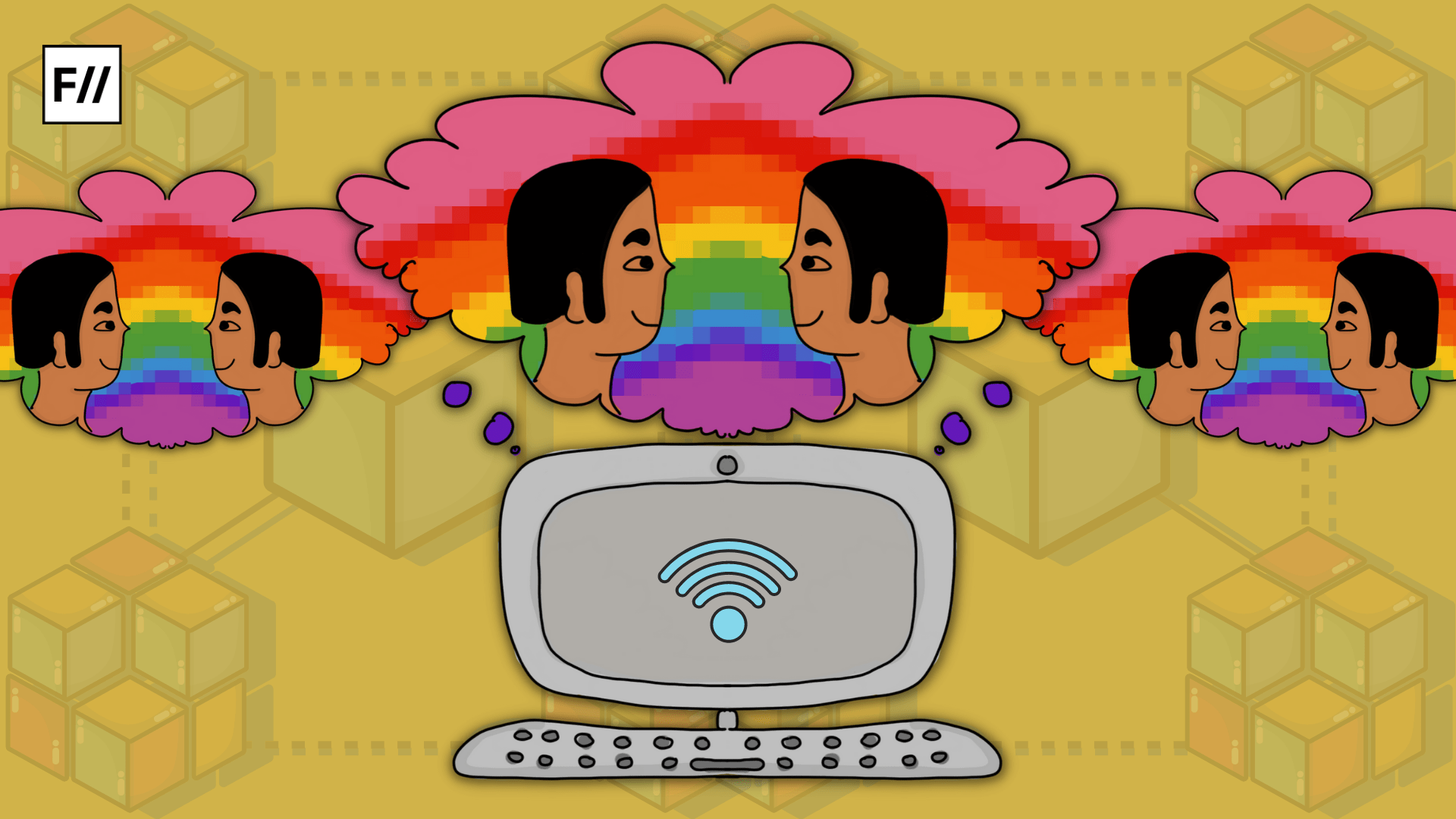Editor’s Note: FII’s #MoodOfTheMonth for June, 2022 is Pride Solidarity. We invite submissions on the many layers of this theme throughout the month. If you’d like to contribute, kindly refer to our submission guidelines and email your articles to sukanya@feminisminindia.com
Polari, a British slang or cant, was the coded language of gay subculture, dating back to the 1700s and 1800s. “Made up of Italianate phrases, rhyming slang and cant terms”, this language provided a cover from the law while being a touchstone to assess safety. Even as the use of the language slowly declined with the decriminalising of homosexuality in Britain, some terms have since percolated into the global queer lexicon.
Words like “camp”, “zhoosh”, or “bibi”, became codes of familiarity and resistance. With 71 jurisdictions across the world criminalising private, consensual, homosexual activity, the need for codes, safe space and refuge is still a reality. Even countries with more progressive legislatures still witness the social persecution, alienation and invisibilisation of the LGBTQIA+ community. But technology has proved to be an asset for the community, with its expansive avenues ranging from social media and dating apps to VPNs and blockchains. The secret language initially used as a code, has now metamorphosed into digital spaces and encryptions.
Queer internet: Social media, apps, VPNs and blockchains
The queer community found immediate sojourn in social media from its inception. In the early 2000s, these platforms provided space for members of the community to connect across continents. In the many countries where being queer was legally punishable, people met online, and stories of love and solidarity bloomed.
In 2009, Grindr, a social networking app for LGBTQIA+ individuals, came into the picture and changed visibility and interaction at the tap of a screen. People who felt unable to express their feelings, doubts and queries could open up online. In a 2019 survey conducted by online dating app Tinder, it was found that 1 out of 5 people first came out online before they spoke about themselves in public.
Social media has also proved to acommodate space for dissent. From protesting crimes against the community to discriminatory legislation, voices on social media play a crucial role in building public discourse, educating people about the community, busting myths and taboos, as well as funding healthcare and surgeries for the underserved population. Thus, technology has united and fortified the LGBTQIA+ community.

Virtual Private Networks (VPNs) provide confidential access to websites or streaming services otherwise unavailable in the area. As India tries to take over VPNs with the KYC mandate, it is important to take note of this technology’s gift to the LGBTQIA+ community. VPNs have provided portals to access information, media and connections to individuals from the community in authoritarian countries. These networks have provided the privacy which was an existential need for the community.
But the internet is becoming increasingly straight. According to GLAAD’s Social Media Safety Index, more than 64 per cent of adult LGBTQIA+ Americans reported abuse and discrimination on the big five social networks: Facebook, Instagram, Twitter, YouTube and TikTok. The internet is as good as its algorithm and the algorithm is as good as the inputs. The majorly heteronormative and masculine brains populating the silicon valley have failed in setting parameters to moderate prejudices.
How can blockchain help the queer community? This technology’s primary principle is to remove singular authority figures. The multinodal blockchain technology helps bypass surveillance and legislation to access information and services. From funding LGBTQIA+ organisations bypassing anti-queer governments, and buying plane tickets for members at risk to escape, to providing reliable and affordable healthcare like HIV tests, and access to events via QR codes, blockchains are slowly changing how the pink economy flexes
The proliferation of incels, NoFap brotherhood, anti-porn feminists, TERFs and alt-right digital misogynists culminate into a sinister alliance of punishing gender and sexuality to patriarchal submission. The Digital Closet: How the Internet Became Straight by Alexander Monea analyses the heteronormative bias of the algorithm and how the moderation of the digital public space entails not only the culling of freedom of expression, but also information and education pertaining to LGBTQIA+ experiences.

In the traditional database, access and moderation of information are typically centralised. Blockchain technology offers an alternative that the queer community has taken into stride. But before we look at these new developments empowering the community, let us gloss over the ever elusive concept of blockchain technology.
Demystifying blockchain technology
The primary hiccup in discussing blockchain technology is technical jargon. While there are many websites that can explain in detail, here is a simple breakdown of blockchain databases as a foil to traditional databases, with a familiar analogy. The traditional database uses client-server network architecture. The user feeds and modifies data, that is stored in a centralised server. The focus lies on information sharing, as the database control remains with the authority, fitting the panoptic surveillance model. (Analogy: This is like the old school Microsoft Word. Comments, notes and other changes are only available to the person working on it. The recipient has to wait for the author to send back the document for further changes.)
Blockchain technology follows the peer to peer architecture, where the peers are equally privileged and potent participants. In this system, clients and servers are not differentiated. The system focuses on connectivity, as the database consists of several decentralised nodes. All nodes are connected to each other, can verify new additions, and are capable of entering new data. (Analogy: This system works like Google Doc. You can share this with multiple people where everyone can edit, add or delete, and the revision history keeps a record of every change that is made.)
Blockchain offers more transparency, as compared to traditional databases. Every user can verify how the blockchain has been modified over time. Nodes store a complete copy of the distributed ledger. Unlike traditional databases, blockchains do not delete any data and operate on two functions – write and read. A question that arises here is: Can you operate a node? Yes, if you meet the requirements. There are node service providers that one can avail of, otherwise.
Additionally, the unique digital signatures used to authenticate transactions, are the fundamental building blocks in blockchains. This ensures enhanced privacy since the blockchain data blocks are added in a linear fashion, making it difficult to tamper with older entries, unless the majority of the nodes come to a consensus to do so.
The hash algorithm used by blockchain masks the source data, and turns digital information into a string of numbers and letters, providing both confidentiality and security. This, needless to say, also opens up routes for illegal or illicit activities. Blockchain technology cannot replace traditional architecture as it is not built for large networks. But this technology can fit specific purposes of an organisation or community. Here is where things get intriguing, as we look into how blockchain technology has been used to uplift and empower the queer community.
Also read: Netflix Lays Off BIPOC, LGBTQIA+ Staff: Racial And Gender Discrimination In The Workplace

Decentralised technology for a decentralised community
How can blockchain help the queer community? This technology’s primary principle is to remove singular authority figures. The multinodal blockchain technology helps bypass surveillance and legislation to access information and services. From funding LGBTQIA+ organisations bypassing anti-queer governments, and buying plane tickets for members at risk to escape, to providing reliable and affordable healthcare like HIV tests, and access to events via QR codes, blockchains are slowly changing how the pink economy flexes.
Technology has been an ally to the LGBTQIA+ community. It has failed the community with its heteronormative bias, but has simultaneously created alternatives that have facilitated a space where the community could meet each other and formulate better solutions for the future. But this hopeful perspective comes wrapped in a rather heartbreaking realisation, one that can be truly felt and understood within the community alone. The need for these technologies to hide or escape reminds us of the stolen freedom to be who we are
In 2011, Hornet, a queer social network was founded by Christoff Wittig. Today, they have a network of 30 million users across the globe. Wittig made one of the first big moves in blockchain technology. In 2018, LGBT Foundation (set up by Hornet Networks) launched the LGBT Token cryptocurrency. The intention was to build a community-owned currency that could benefit from the decentralised technology of blockchain. The token was launched to verify identities, showcase the strength of the pink economy, and set aside a portion of the tokens to fund activities of LGBT Foundation.
Blockchains require users to have unique signatures. LGBT Token had to evolve into a non-crypto currency payment wallet, as users did not prefer the trouble of remembering the key. This has changed their geographical reach. LGBT Token also launched HIV test online, where Hornet users can purchase Insti Self Test using their wallet, keeping their identity private. They are also looking to collaborate with national health systems in other countries.
As mentioned earlier, blockchain requires the consensus of nodes to make any changes in the chain. Proof of Work is the consensus algorithm in a blockchain network. Hornet Network uses the same concept to verify identities and prevent attackers, catfishers and spammers. They use extensive AI help, instead of relying on government IDs that fail to provide any nuanced information.
In early 2021, a Tokyo based project named Famiee blockchain-backed partnership certificates to queer couples across the spectrum. This nationwide Japanese service reads like a digital fairytale for the many countries that do not recognise marriage outside the heteronormative traditions. This certificate provides access to a network of service providers (from insurance to healthcare), looking to be more inclusive in their operations and who are avowed to Famiee. The organisations that Famiee has partnered with ,need couples to furnish their Famiee marriage certificate to avail any service. The platform is also hoping to beef up their network enough to push for legislative change – an exemplary model for many other countries.

Backed by Miami-based venture capital firm Borderless Capital, the first LGBTQIA+ cryptocurrency Maricoin, was launched this year. It received criticism for its name, derived from a homophobic Spanish slur, but that was thwarted with the argument that reappropriating a slur in this manner only helps the community reclaim their language. This coin will be accepted by businesses including restaurants, cafes, shops and hotels, that have signed the anti-discrimination manifesto. With a minority base targeted, this coin will require an accelerated adoption to gain traction in the market.
Blockchain technology has also found its way into safer search engine options. Our browser history is a data mine for surveillance. Brave allows its users to store data on a blockchain. As we have already taken a look at the data saving process and unique access key, this browser minimises any third-party’s snooping.
Non Fungible Token (NFT) art has also garnered traction in the last couple of years. These digital collectables encourage artists from across sections of society, with dynamic participation from the community. Initiatives like QueenlyNFT help push LGBTQIA+ artists by exclusively curating queer artists.
Technology has been an ally to the LGBTQIA+ community. It has failed the community with its heteronormative bias, but has simultaneously created alternatives that have facilitated a space where the community could meet each other and formulate better solutions for the future. But this hopeful perspective comes wrapped in a rather heartbreaking realisation, one that can be truly felt and understood within the community alone. The need for these technologies to hide or escape reminds us of the stolen freedom to be who we are.
A friend pointed out that a marriage license might give them access to loans and insurance, but not to joint adoption rights. Aa HIV test might help us stay aware, but does not destigmatise the treatment of patients in the society. Thus, the need for Polari has only been transformed, not erased.
Also read: Is Tripura Catching Up When It Comes To Supporting The LGBTQIA+ Community?
Featured Illustration: Ritika Banerjee for Feminism In India
About the author(s)
She/they is an editor and illustrator from the suburbs of Bengal. A student of literature and cinema, Sohini primarily looks at the world through the political lens of gender. They uprooted herself from their hometown to work for a livelihood, but has always returned to her roots for their most honest and intimate expressions. She finds it difficult to locate themself in the heteronormative matrix and self-admittedly continues to hang in limbo




